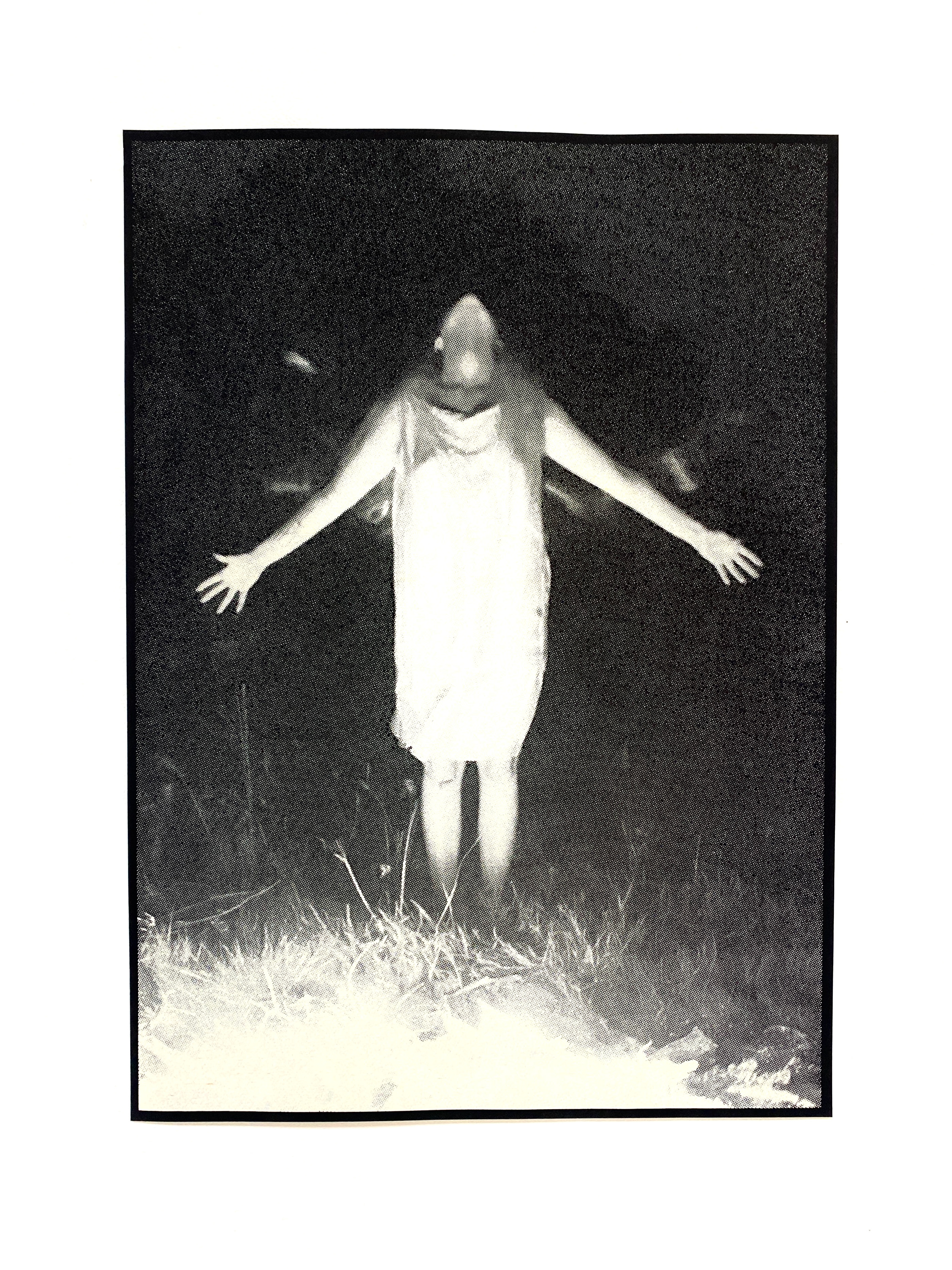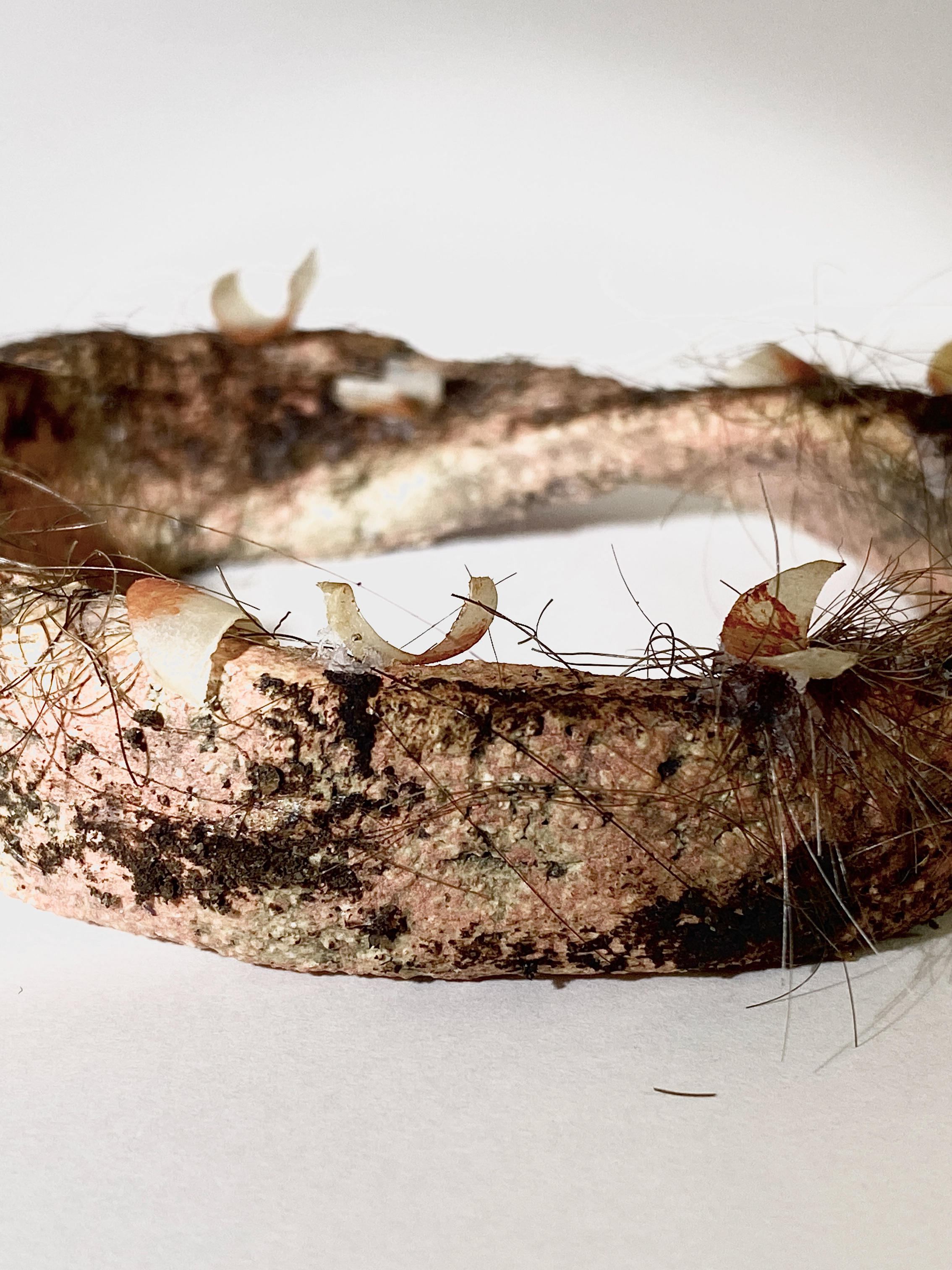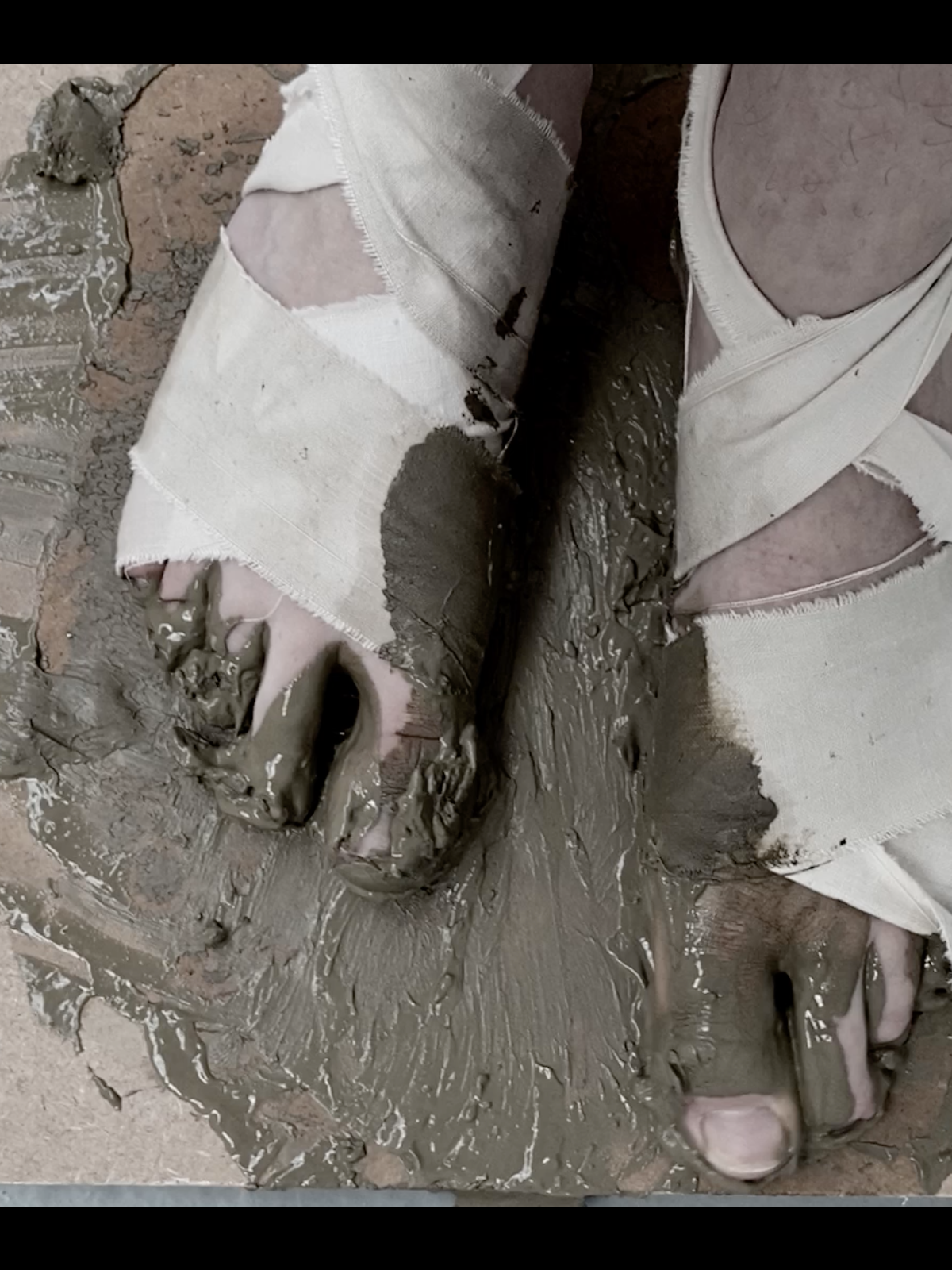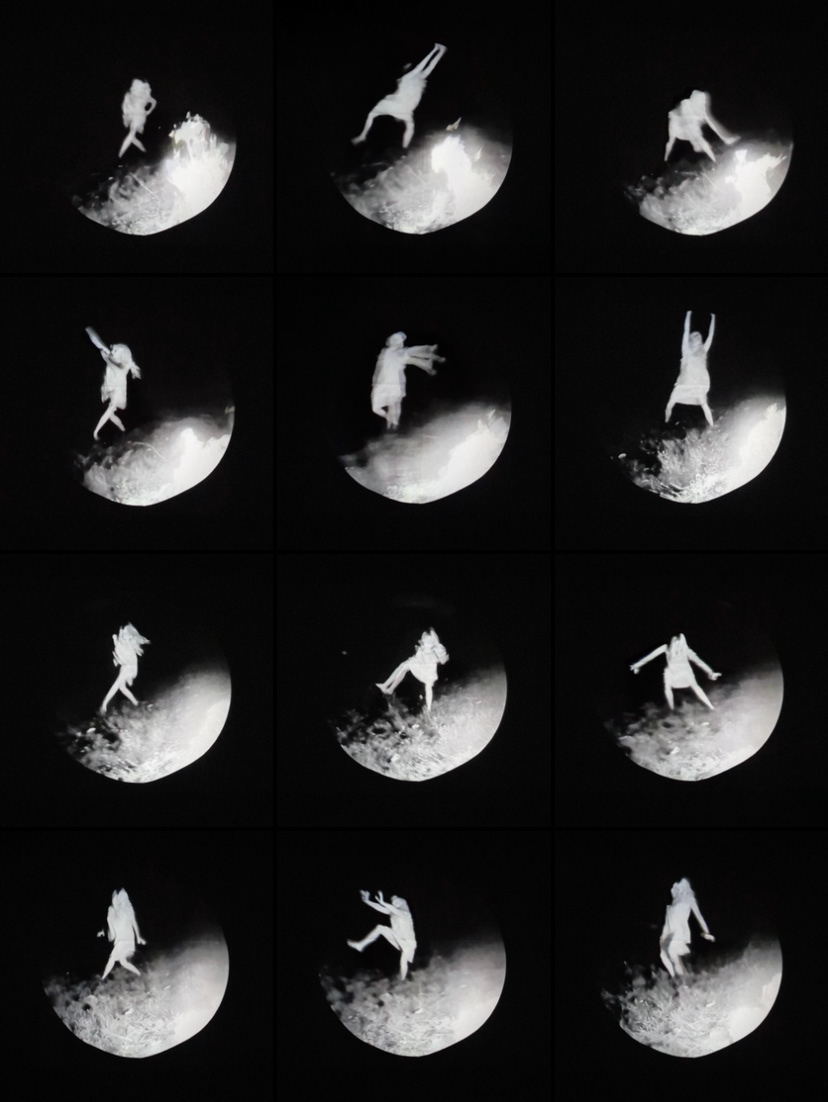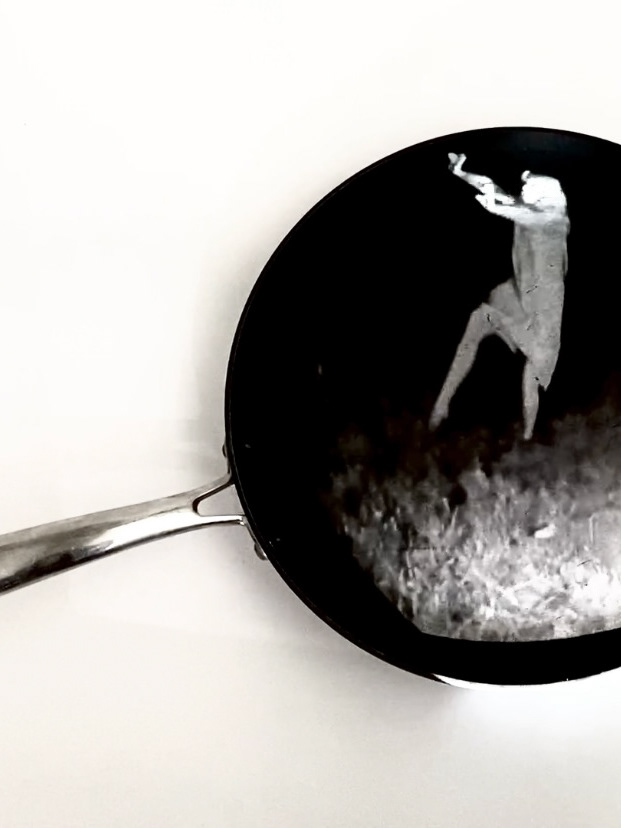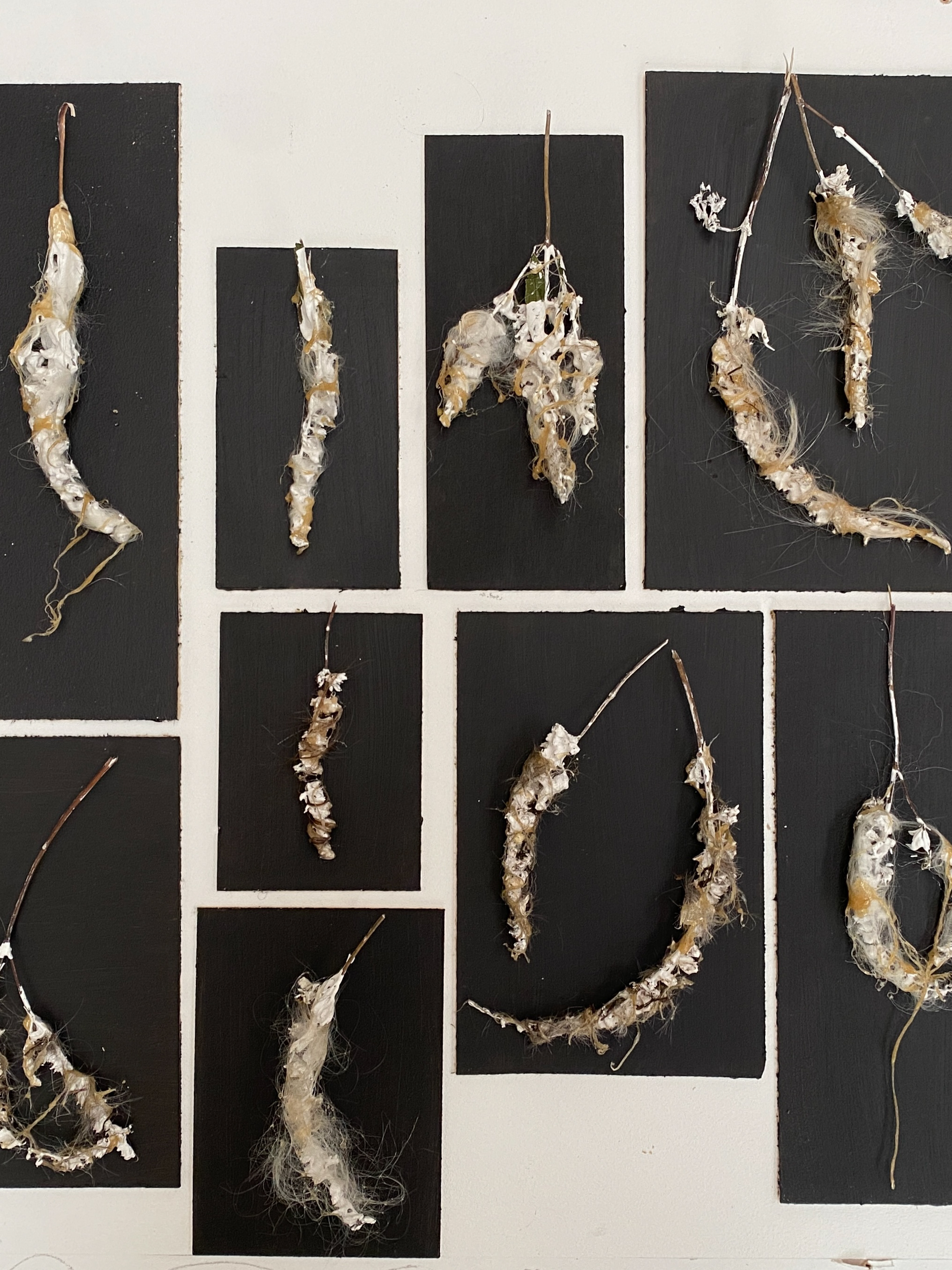Circuition
78cm x 105cm. Wood, Plaster, Dirt, Epoxy Resin, Menstrual Blood. Julia Kristeva suggests that the maternal body is abject, specifically focusing on how menstrual blood is seen as a pollution from within (Kristeva, 1982). The circle of menstrual blood displayed on the textured background brings this pollution from the inside to the outside. Feminist theorist, Elizabeth Grosz discusses the value of bodily fluids, proposing that male semen is psychoanalytically linked to his function to create, along with his sexual pleasure, whereas female menstruation is an uncontrollable leaking fluid. “…the female body has been constructed not only as a lack, or absence, but with more complexity, as a leaking, uncontrollable, seeping liquid; as formless flow; as viscosity, entrapping, secreting; as lacking not so much or simply the phallus but self-containment - not a cracked or porous vessel, like a leaking ship, but a formlessness that engulfs all form, a disorder that threatens all order?” (Grosz 1994: 203). Grosz, E. (1994). Volatile Bodies: Toward a Corporeal Feminism. Indiana University Press. Kristeva, J. (1982). Powers of Horror, An Essay on Abjection. Columbia University Press.
